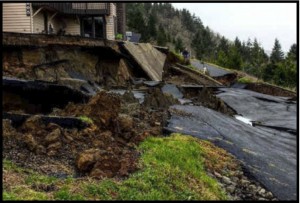By Kevin Gilbride
It takes a lot for me to be excited. I tend to be a calm, collected person. When I graduated from high school in 2007, I moved to Eugene to attend University without excitement, knowing that I was doing what was expected of me. Barring a few adventures abroad, I have lived here ever since, doing what has been expected of me: graduating from university and getting a full time job. But now I am doing something unexpected, something maybe even exciting.
Now I am a master’s candidate of community and regional planning. I am currently working with the Community Planning Workshop at the University of Oregon. I moved to Eugene as a young man with no concept of a local food movement—I ate what I wanted when I wanted regardless of the season or the impact of my food habits. Local, sustainable food has since become a focus of my life.
Doing what isn’t expected of me by continuing my education has provided me with the opportunity to further my understanding of, and perhaps my obsession with, local food. For the next five months (has it been a month already?), under the umbrella of the Community Service Center and the University of Oregon, I have the opportunity to work with the City of Eugene, Lane County, Eugene Water and Electric Board and a variety of other local partners to assess the financial viability of a year-round public market in downtown Eugene. The idea for a public market originated in 2009 and germinated in a previous CPW project—market feasibility analysis which led into the current feasibility assessment project.
Such a market will bring fresh, local food to the community every day, sold directly by the farmers to the consumers, providing a vital connection between people and the food they eat.
I sit now, reflecting on the opportunities that the next five months of working for the CPW will provide me in my planning education, and while the professional skills that I will develop are a huge bonus, the biggest bonus, and thus a reason for excitement for this project, is the idea that I have an opportunity to directly impact the health of the community that I live in, and that I have grown to love. For this, I am excited.

California born, Oregon raised, Kevin has been living in Eugene for nine years. Kevin joined the Master’s of Community and Regional Planning program at the University of Oregon to pursue his goal to promote and construct multi-modal infrastructure. Kevin is an avid soccer player, bike commuter, and hiker, and loves quality local food.


